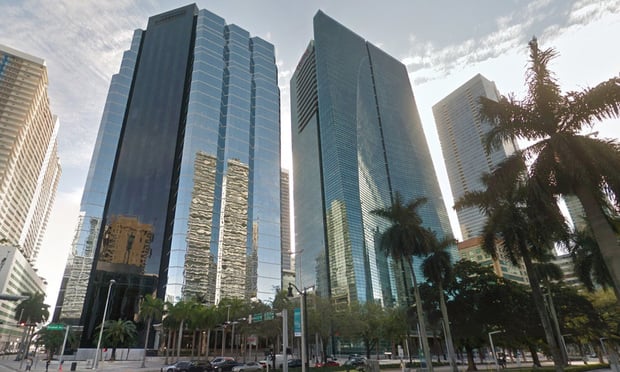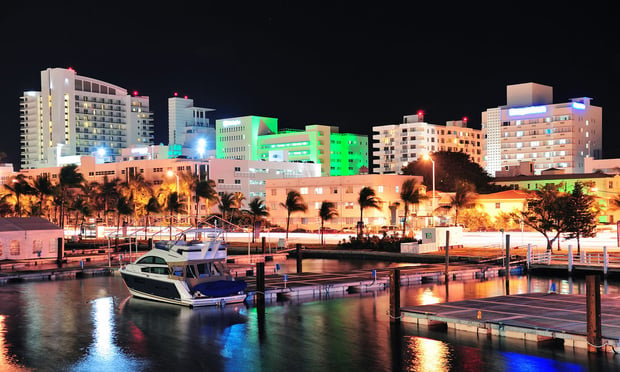 Steve Medwin, executive managing director, South Florida for Newmark Knight Frank
Steve Medwin, executive managing director, South Florida for Newmark Knight Frank
MIAMI—The industrial real estate market in South Florida continues to show no sign of weakness, posting robust leasing and investment demand and an impressive development pipeline.
Newmark Knight Frank Steve Medwin, executive managing director, South Florida, tells Globest.com that the region's industrial market saw substantial growth in demand in the second quarter with positive net absorption of 1.4 million square feet, bringing midyear net absorption to just under 2.3 million square feet.
“The South Florida industrial sector is a very healthy,” Medwin says. “The fundamentals are very strong. We are seeing tremendous demand from tenants that are looking for more space and moving into the area.”
He adds that the development side of the market is strong with investors building a significant amount of speculative and build-to-suit product. Despite the new product coming on line, the strong demand has kept vacancy rates low in South Florida.
Medwin notes that most of the new product under construction is spec and the strong demand has resulted in many of these properties securing either full building or partial leases prior to the doors opening for the first time.
In fact, at the mid-year point there is currently more than 5.5 million square feet of industrial space (28 buildings) under construction in South Florida, a record high for the past 10 years, according to the Newmark Knight Frank second quarter report. Over a third of the industrial buildings under construction in the region are located in the North/Central Dade submarket. The top two markets for proposed industrial space are in the Medley and North Central Dade submarket, representing 50% of South Florida's industrial development pipeline. According to the brokerage firm's report, there are currently 30 industrial buildings proposed in South Florida totaling more than 9.5 million square feet of space.
The Newmark Knight Frank industrial team attributes the current industrial boom to the region's access to the port and trade routes as well as to Miami's strong international tourism industry and immense consumer spending power. They note that many industrial users are seeking space to house merchandise for both brick and mortar retailers and e-commerce. Miami's tourism and consumer buying power are also fueling successful retail destinations such as Sawgrass Mills and the recently approved plan to build the largest U.S. mall, American Dream Miami, they add.
Newmark Knight Frank is currently tracking 46 tenant industrial requirements in the South Florida market totaling 4.5 million square feet of space. Medwin notes that the tenants in the retail/wholesale sector account for 1.3 million square feet of space requirements in the market; followed by logistics/distribution at 1.15 million square feet and then food and beverage at 700,000 square feet.
Another clear indication of a healthy market is the breakdown of the tenant requirements themselves with 61% seeking expansion space, 31% looking for similar sized quarters and just 8% looking to downsize their current operations.
Those positive market forces caused Medwin to say, “All signs are pointing in the right direction.”
A significant transaction in the second quarter was Amazon's occupation of its new 836,000-square-foot distribution center in Opa-locka, FL in Miami-Dade County. The Amazon space accounted for 65% of the industrial space delivered (1.28 million square feet) in the second quarter of this year in Miami-Dade. In Broward County, a total of 39,678 square feet of space was delivered in the second quarter of this year.
In the last two years, a total of 30 buildings totaling 6.19 million square feet of industrial space were delivered in South Florida.
South Florida's robust development kept vacancy rates somewhat level region-wide over the past 12 months, decreasing only 10 basis points to 4.0%. More than 5.1 million square feet of new industrial inventory was delivered in the past year, a 17% increase from the 4.3 million square feet delivered during the same period up to the close of second-quarter 2017.
The industrial vacancy rate for Miami-Dade at the mid-year point this year was 3.9%, while Broward County came in with a 4.5% vacancy rate.
In spite of unprecedented construction activity, demand growth has kept occupancy hovering around the 96.0% mark. The region's tight market conditions and continued strong demand for new higher-end distribution space translated into a gain of $0.24-per-square-foot from the second quarter of last year to $8.22-per-square-foot, which is getting ever so close to the $8.54-per-square-foot record set back in 2007, Newmark Knight Frank states.
The robust leasing activity in new developments throughout South Florida hindered significant jumps in rent averages, as lower-tier vacancies had a greater impact and are cheaper, the brokerage states.
General industrial space in the region saw the largest year-over-year year increase, to $8.34-per-square-foot in the second quarter of this year from $7.84-per-square-foot a year earlier. The average asking rent for warehouse/distribution space region wide increased to $7.31-per-square-foot from $7.16-per-square-foot during the same time period in 2017.
|Want to continue reading?
Become a Free ALM Digital Reader.
Once you are an ALM Digital Member, you’ll receive:
- Breaking commercial real estate news and analysis, on-site and via our newsletters and custom alerts
- Educational webcasts, white papers, and ebooks from industry thought leaders
- Critical coverage of the property casualty insurance and financial advisory markets on our other ALM sites, PropertyCasualty360 and ThinkAdvisor
Already have an account? Sign In Now
*May exclude premium content© 2024 ALM Global, LLC, All Rights Reserved. Request academic re-use from www.copyright.com. All other uses, submit a request to [email protected]. For more information visit Asset & Logo Licensing.








